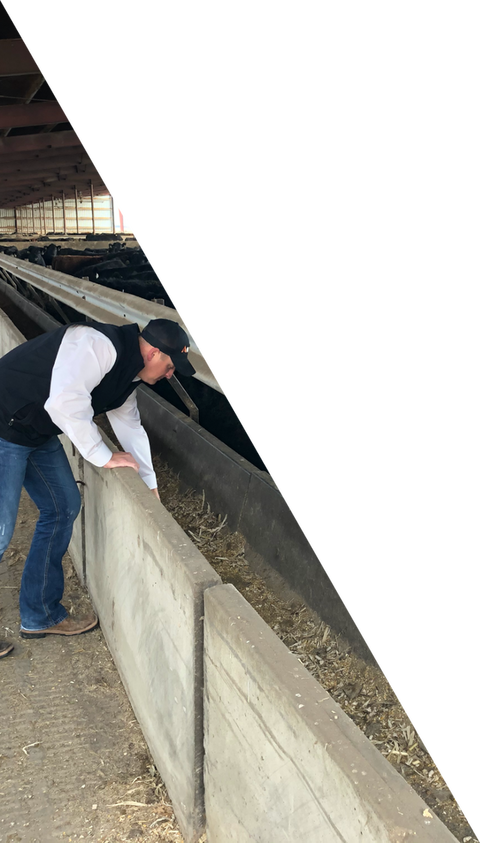

Scroll to
read more
Case study:
Mycotoxins in beef
Towards the end of May, Bryan Sanderson, Alltech’s U.S. beef business manager, got a call from a customer. It was a retail feed dealer looking to discuss overall performance challenges, daily intake fluctuations and abnormal death loss at one of his customer’s feedlots.
“The customer and the feedlot owner were concerned that there was something going on, and they could not quite put their hands on what that might be,” Bryan recalls. “They tried changing the diets, changing sources of some outside purchased feedstuffs and still could not solve the issues.
“The owners of this 6,300 head finish feedlot are large farmers and put up a lot of their own fermented feeds; high-moisture corn, high-moisture ear corn and grass/alfalfa haylage. Their business model is to walk their farm products off the farm versus hauling commodities to an elevator or ethanol plant. With a hay and corn rotation, they can rotate crops, limit the amount of harvest equipment they need and return nutrients through the manure back to the farmland. They buy yearlings or backgrounded calves that weigh 850–1,000 pounds and feed them to weigh 1,500–1,600 pounds. They turn their feedlot over 2.25 times per year for an annual total of roughly 15,000 head.”
Being new to Alltech (he only started in the middle of May), Bryan was still learning the ropes when it came to the possible challenges and solutions.
“I did not understand all the products and technologies available, how they were used or what they were used for,” admits Bryan. “With the bulk of my work history being in U.S. beef production, nutrition and management, I still hadn’t heard of the implications of mycotoxins on overall animal health and performance."
“Right as I started with Alltech, I learned about mycotoxins and using Mycosorb A+®. Using this new-found information, I suggested to the feedlot owners and the feed dealer that we pull feed samples and test for mycotoxins. The grass/alfalfa haylage came back extremely high, and the high-moisture corn and ear corn both came back as moderate.”
Based on the results of these tests, the feedlot owner incorporated 10g/hd/day of Mycosorb A+ through their mineral/vitamin supplement.
Almost overnight, the feedlot saw results. As they were monitoring and tracking the cattle, they saw a 1- to 2-pound sustained dry matter increase in two days. Feed intakes leveled off, and within five days, they did not have any more digestive deads. Cattle that closed out in the last month showed an average of 0.75–1 pound of average daily gain higher than what they saw in the previous three to four years.
“When the feedlot ran out of the haylage in mid-July, there was a discussion about the need for Mycosorb A+; either taking it out or just reducing the amount,” continues Bryan. “Knowing there were plenty of feedstuffs with moderate amounts of mycotoxins left, and the performance improvement and overall health of the cattle, the feedlot wanted to stay on Mycosorb A+ at 5g/hd/day. Since then, Alltech 37+® mycotoxin analysis has been submitted on new crop feedstuff samples to determine the mycotoxin load and the game plan of using Mycosorb A+ going forward.”
Scroll to
read more


